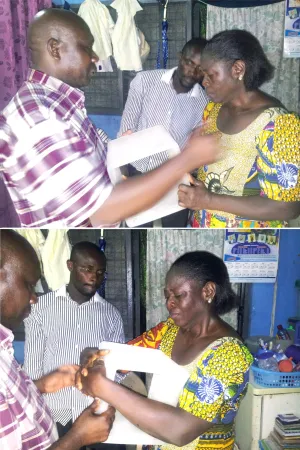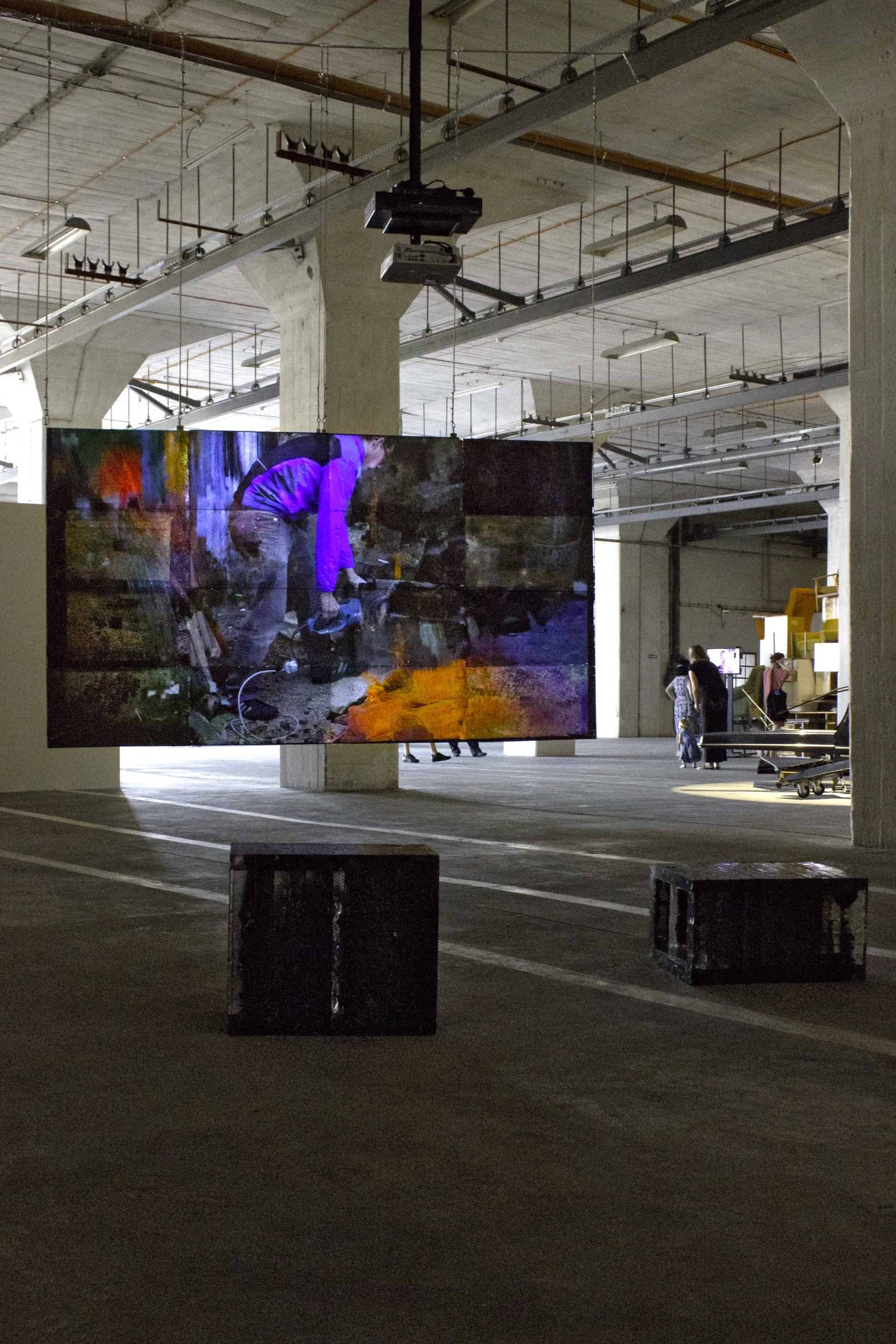
The Shed - AK9

EN / The Shed - AK9, 2016.
Video installation: projection surface (320cm x 180cm) and seating made from the remains of the artist's burnt possessions, cast in polyester
Home Cinema Receiver, 16 structure-borne sound transducers, projection
Full HD Video 14:25
In January 2012, AK9, an artist-run studio in an industrial area of Amsterdam, burned to the ground. Thick black smoke caused traffic jams on nearby highways, airplanes approaching Schiphol Airport had to take alternate routes, and multiple newspapers and TV stations reported on the event. For those affected, it felt surreal — almost like an act of war, the kind that usually happens somewhere else.
Daniel Vollmond and the other residents escaped just in time.
The cause of the fire was never determined. AK9 and its residents were neither insured nor legally protected, resulting in a total financial loss for most. The site was later taken over by a neighboring scaffolding company.
In the end, what sustained the victims of the fire was a network of close friends and family.
As an installation, AK9 embodies the spirit of a place that no longer exists. It reflects on the loss of all material possessions and the alternative, communal structure of AK9—exploring both its strengths and its flaws.
Physically, the installation consists of burnt remnants that the artist salvaged from the ruins before the rest was discarded in a landfill. The accompanying video was reconstructed from digital fragments recovered from a damaged hard drive using data-recovery software. This hard drive was one of the few items the artist managed to grab before fleeing the flames. Many files were corrupted, unreadable, or heavily fragmented, requiring painstaking effort to restore.
Data-moshing is therefore the central stylistic element of the video.
The soundscape is composed of surviving video recordings and conversations the artist had with his former flatmates in the aftermath of the fire.
DE / The Shed - AK9, 2016.
Videoinstallation: Projektionsfläche (320cm x 180cm) und Sitzgelegenheiten aus den Überresten des verbrannten Besitzes des Künstlers, in Polyester gegossen
Home Cinema Receiver, 16 Körperschallwandler, Projektion
Full HD Video 14:25
Im Januar 2012 brannte AK9, ein von Künstlern betriebenes Wohnatelier in einem Industriegebiet von Amsterdam, bis auf die Grundmauern nieder. Dicker, schwarzer Rauch legte den Verkehr auf den nahe gelegenen Autobahnen lahm, Flugzeuge auf dem Anflug nach Schiphol mussten Ausweichrouten nehmen, und mehrere Zeitungen sowie Fernsehsender berichteten über das Ereignis. Für die Betroffenen wirkte es surreal – fast wie eine Kriegshandlung, die sonst immer nur anderswo stattfand.
Daniel Vollmond und alle anderen Bewohner konnten sich gerade noch rechtzeitig retten.
Die Ursache des Feuers wurde nie geklärt. AK9 und seine Bewohner waren weder versichert noch rechtlich geschützt – für die meisten ein finanzieller Totalschaden. Das Gelände wurde später von einem benachbarten Gerüstbauunternehmen übernommen.
Was die Opfer des Brandes letztlich auffing, war ein Netzwerk aus Freunden und Verwandten.
Als Installation verkörpert AK9 den Geist eines Ortes, der nicht mehr existiert. Sie setzt sich mit dem Verlust des gesamten Eigentums auseinander sowie mit der alternativen, gemeinschaftlichen Organisationsform von AK9 – in all ihren Facetten, guten wie schlechten.
Physisch besteht die Installation aus verbrannten Überresten, die der Künstler aus der Ruine bergen konnte, bevor der Rest auf einer Müllhalde landete. Das begleitende Video wurde aus digitalen Fragmenten rekonstruiert, die mithilfe von Recovery-Software von einer defekten Festplatte gerettet wurden. Diese Festplatte war eines der wenigen Dinge, die der Künstler bei seiner Flucht aus den Flammen noch in seinen Rucksack stecken konnte. Viele Dateien waren beschädigt, unlesbar oder stark fragmentiert und konnten nur mit Mühe wiederhergestellt werden.
Data-Moshing ist deshalb das zentrale Stilelement des Videos.
Der Ton setzt sich aus den erhaltenen Videoaufnahmen sowie aus Gesprächen zusammen, die der Künstler nach dem Brand mit seinen ehemaligen Mitbewohnern geführt hat.
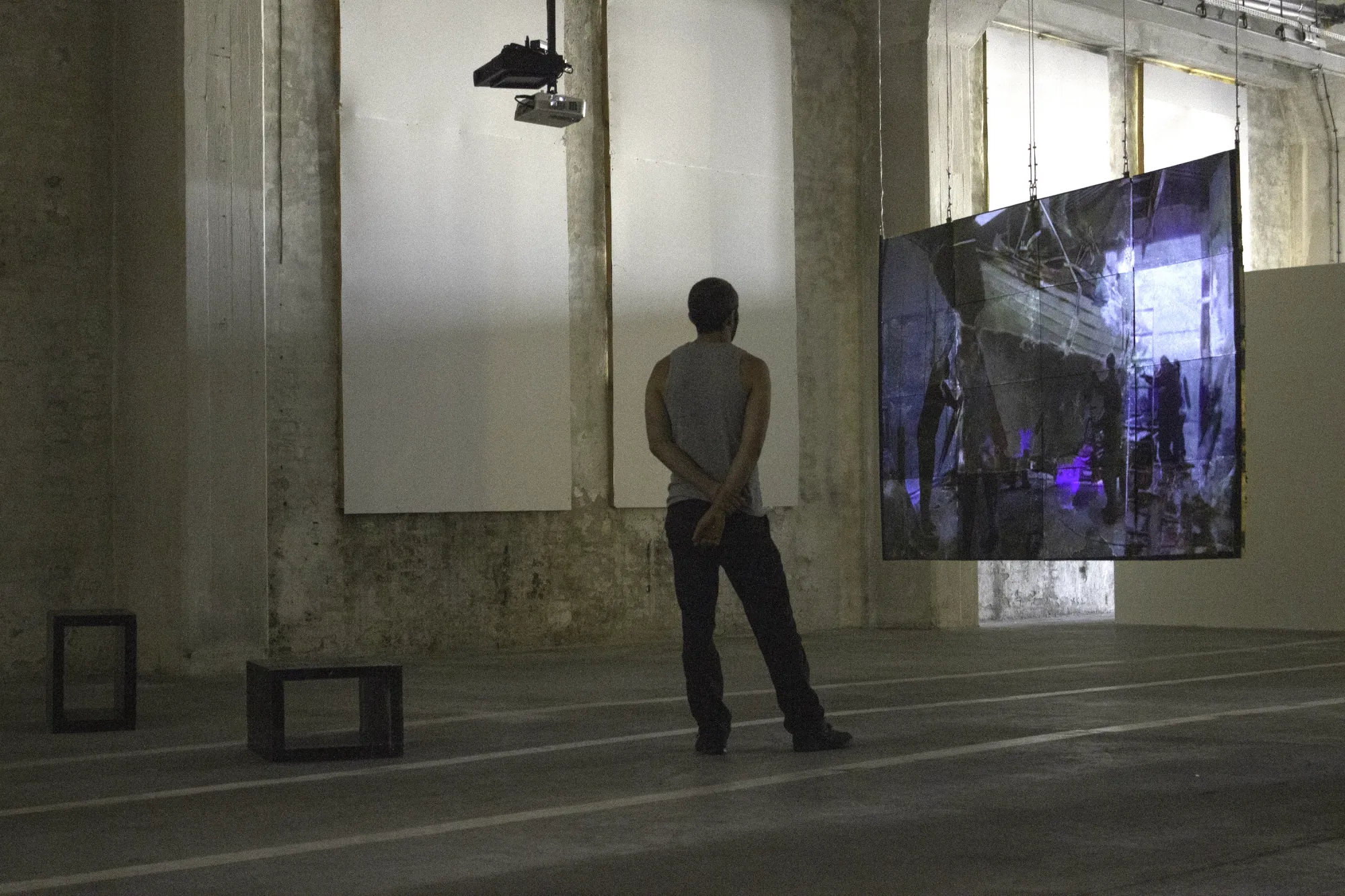
AK9
Loop (14:25 min)
Alternativa 2016 / Damage & Loss
24.06. - 25.09.2016, Gdansk (PL)
An exhibition curated by Anna Nawrot, Lívia Páldi & Aneta Szyłak
Participating Artists:
Anna Baumgart, Ursula Biemann, Karolina Breguła, Karolina Brzuzan, Ella de Burca, Gabriella Csoszó & Lívia Páldi, Daniel Dressel, Dariusz Fodczuk, Ingela Johansson, Zuzanna Janin, Sven Johne, Hiwa K, Anton Kats, Anna Królikiewicz, Honorata Martin, Hanna Nowicka, Ekta Mittal, Rozhgar Mustafa, Anneè Olofsson, Agnieszka Polska & Witold Orski, Salam Atta Sabri, IM Heung-soon, Katarina Šević and Tehnica Schweiz (Gergely László & Péter Rákosi), Dominika Skutnik, Mariusz Tarkawian, Milica Tomić, Mariusz Waras
Alternativa 2016
Hall 90B / Former premise of Gdansk Shipyard
Gdansk
Poland

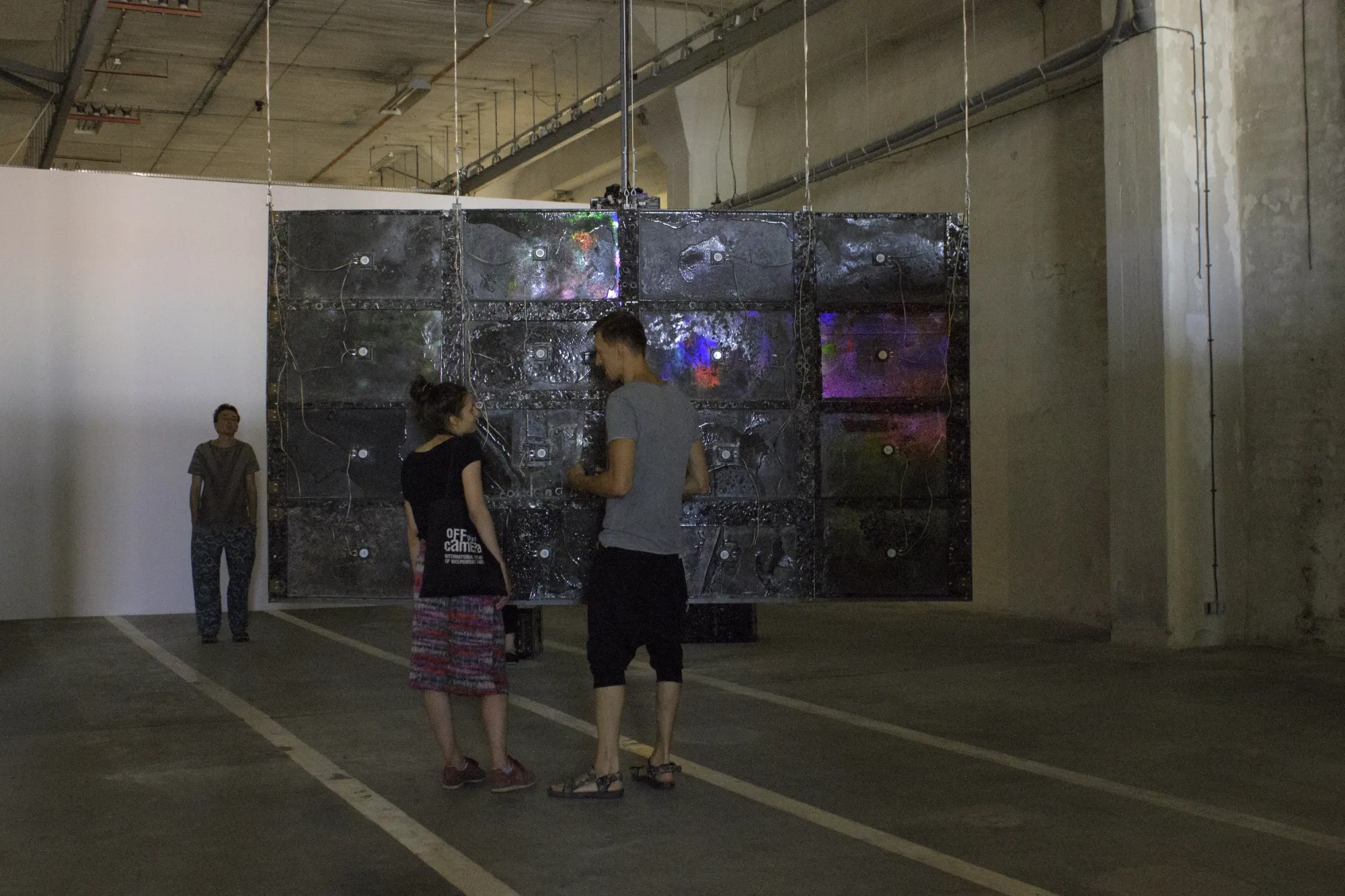
The Shed - AK9
† 17.01.2012
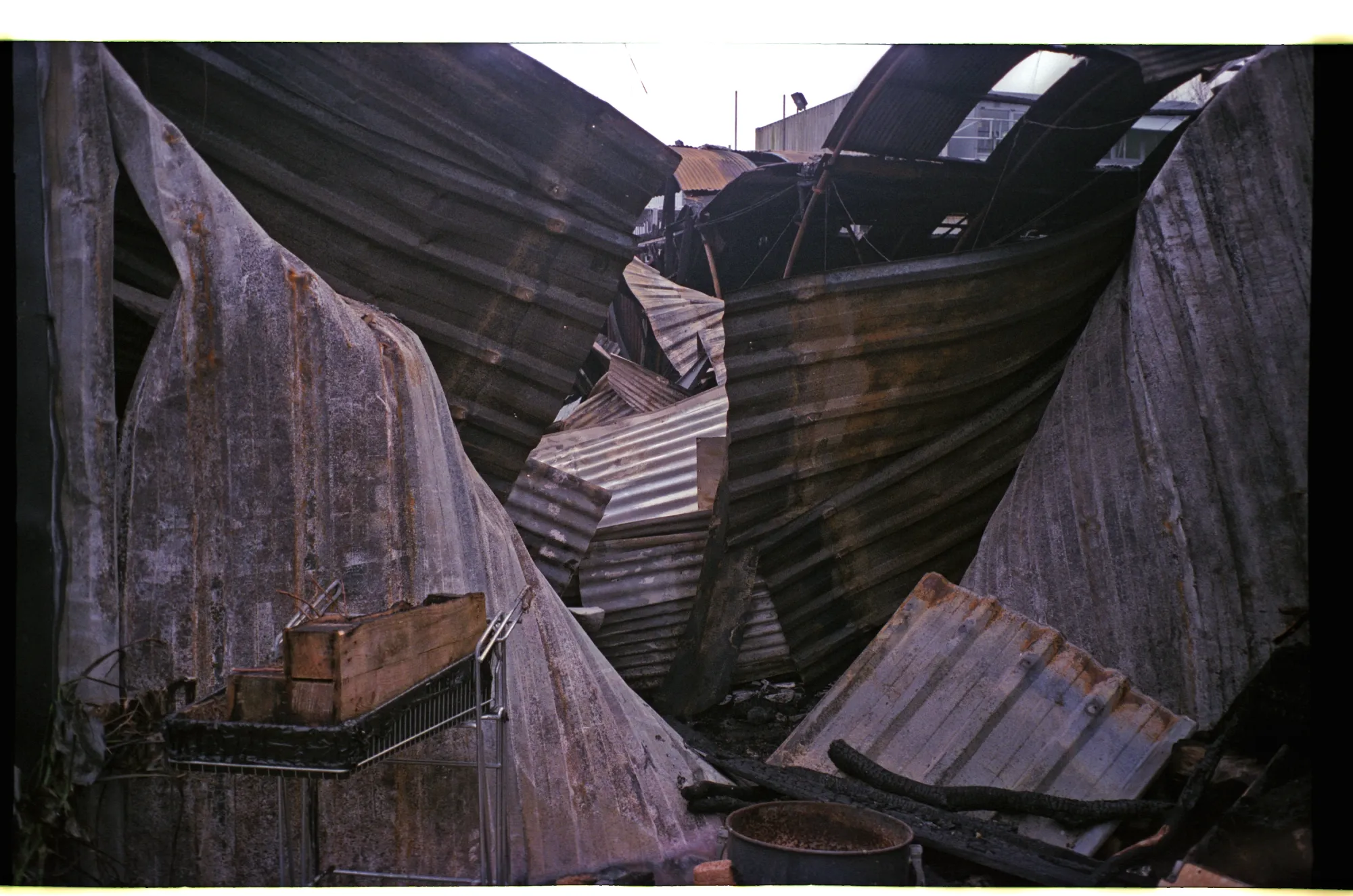

ghost |gəʊst| - a slight trace or vestige of something
site |sʌɪt| - a place where a particular event or activity is occurring or has occurred
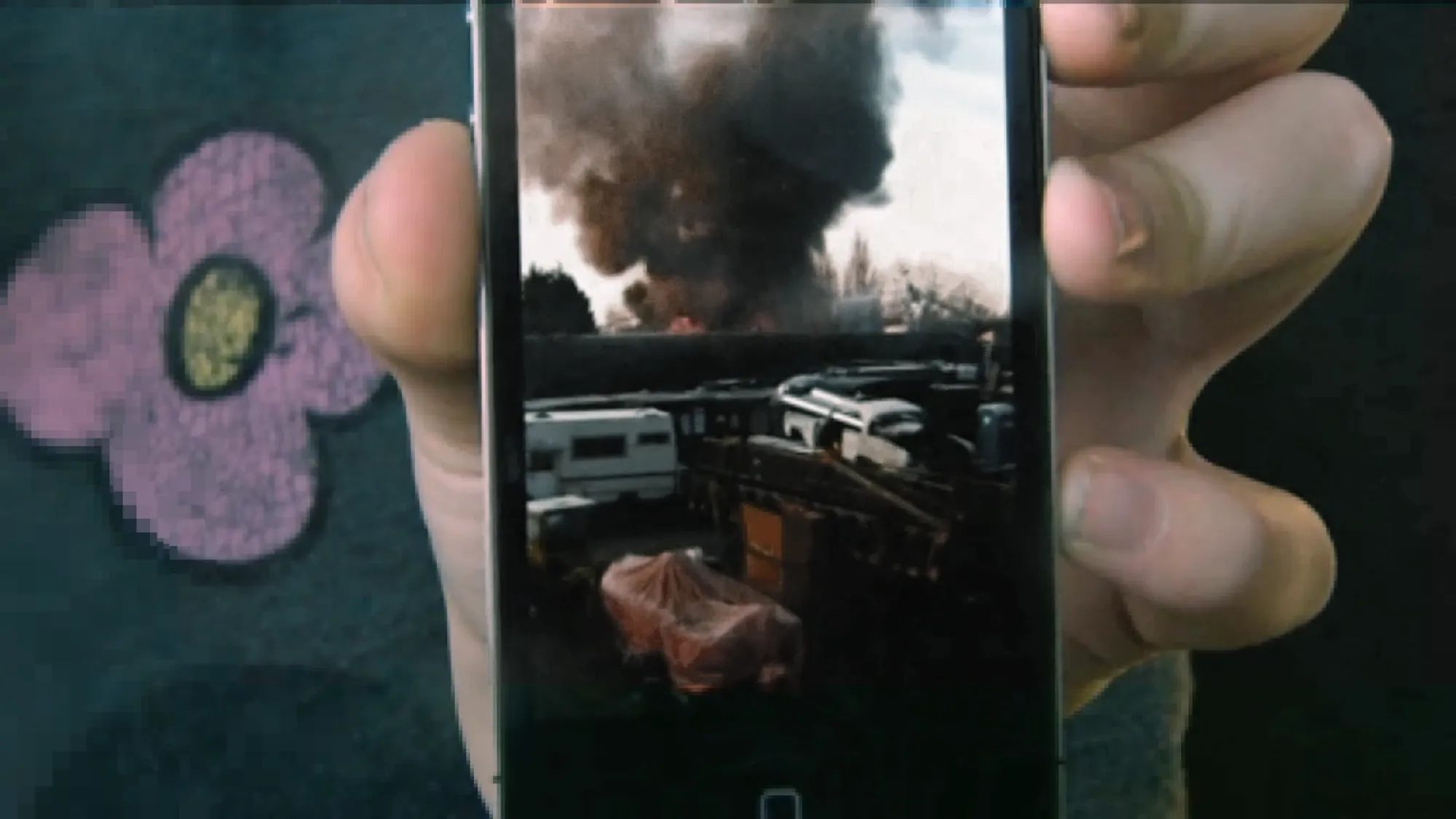
Shifting the Territory
Daniel Vollmond / 2014 / MFA Goldsmiths
Shifting the Territory
2014 / London, UK
773 words
Reading time: 3-4min
When I first arrived in the city, I was pushed into a corner. The rent for a tiny room in a small shared apartment in Amsterdam was beyond my budget, and affordable student housing simply wasn’t available. But I had to manage somehow. For nearly two months, I slept in my old Volkswagen Polo, moving frequently to keep a low profile. Most nights, I parked for free next to an industrial estate, always afraid of being discovered by the authorities. There was an overground metro station nearby that I used to get to university. I never expected it to be this hard to find an affordable place to live, and I had rarely felt so alone before. Even though I had done nothing wrong, I felt like a criminal on the run.
During the day, I went to university. At night, I spent time with a group of young Italian squatters. Together, we searched for empty houses to occupy. At first, it was a necessity, born out of marginalization and a lack of options. But soon, desperation turned into conviction. Our struggle was no longer just about survival: it became an act of defiance, a rejection of the structures that dictate how we are supposed to live. We needed space to breathe.
At the same time, ‘making art’ became our way of refusing to work within an established hierarchy — to be employed by a boss. The way we found each other, our shared desires and struggles, our individual skills, and an openness toward one another formed the foundation of our ‘commune’. Eventually, we squatted a derelict house in the city center. But even within the larger squatting community, I found another dead end. There was an inherent mistrust of outsiders. Newcomers were often suspected of being undercover law enforcement or undercover neo-Nazis. Trust had to be earned and their suspicion felt like poison.
Eventually, I met a different group of like-minded people, and together, we moved into a warehouse, transforming it into a shared studio space: AK9 — several hundred square meters of concrete flooring, a roof, and thin corrugated metal walls. When we first arrived, the space was in rough shape, and living there was illegal. But for us, AK9 became more than just a home or an artist-run studio. It was a space where we reimagined how life could be organized, where we experimented with alternatives to what society deems ‘normal’.
Together, and with very little money, we built walls to divide the space into private units. We added insulation, installed wood-burning stoves to survive the winter, built a shower and a communal kitchen, and even cut openings into the ceiling to let in daylight. Electricity and internet followed. There was absolute freedom to reshape the space according to our needs.
The same kind of freedom applied to how we lived. Most of us were semi-chaotic and young, navigating the grey areas of the law to maintain self-sufficiency. Instead of relying on energy suppliers, we collected Euro pallets, trash and discarded furniture from the streets, chopping wood to heat our stoves.
The parties at AK9 were legendary. Our naïve enthusiasm was the spark, but it was our flexible approach to labor, our willingness to learn from mistakes, and our collective imagination that allowed us to create time and mental space: to think, to create, to work autonomously.
Of course, AK9 was never perfect. The natural human tendency to form hierarchies sometimes led to conflict. There was no fixed set of rules, and to this day, some of us believe that if AK9 had developed a rigid social structure, it would have lost its essence — it would have become just another institution. Despite occasional friction, the most valuable thing AK9 gave us was a sense of solidarity that is hard to find elsewhere. And, as paradoxical as it may seem, it was a ‘commune’ that also allowed us 'not to belong'.
This is why I sometimes wonder: Is it possible to consciously choose 'not to belong', in order to maintain a critical distance from the society that surrounds us? Maybe it is even necessary if we want to reclaim agency over our own lives.
AK9 as a physical space is gone, but its spirit is not lost. A network of individuals who share a similar attitude can be understood as a ‘commune’ in a much broader sense. Even though we are now scattered across different places, perhaps it is precisely this division that holds potential — the possibility of forming something fluid, organic, ever-shifting, something that continues to evolve: to become the kind of 'territory' we are dreaming of.
Daniel Vollmond
